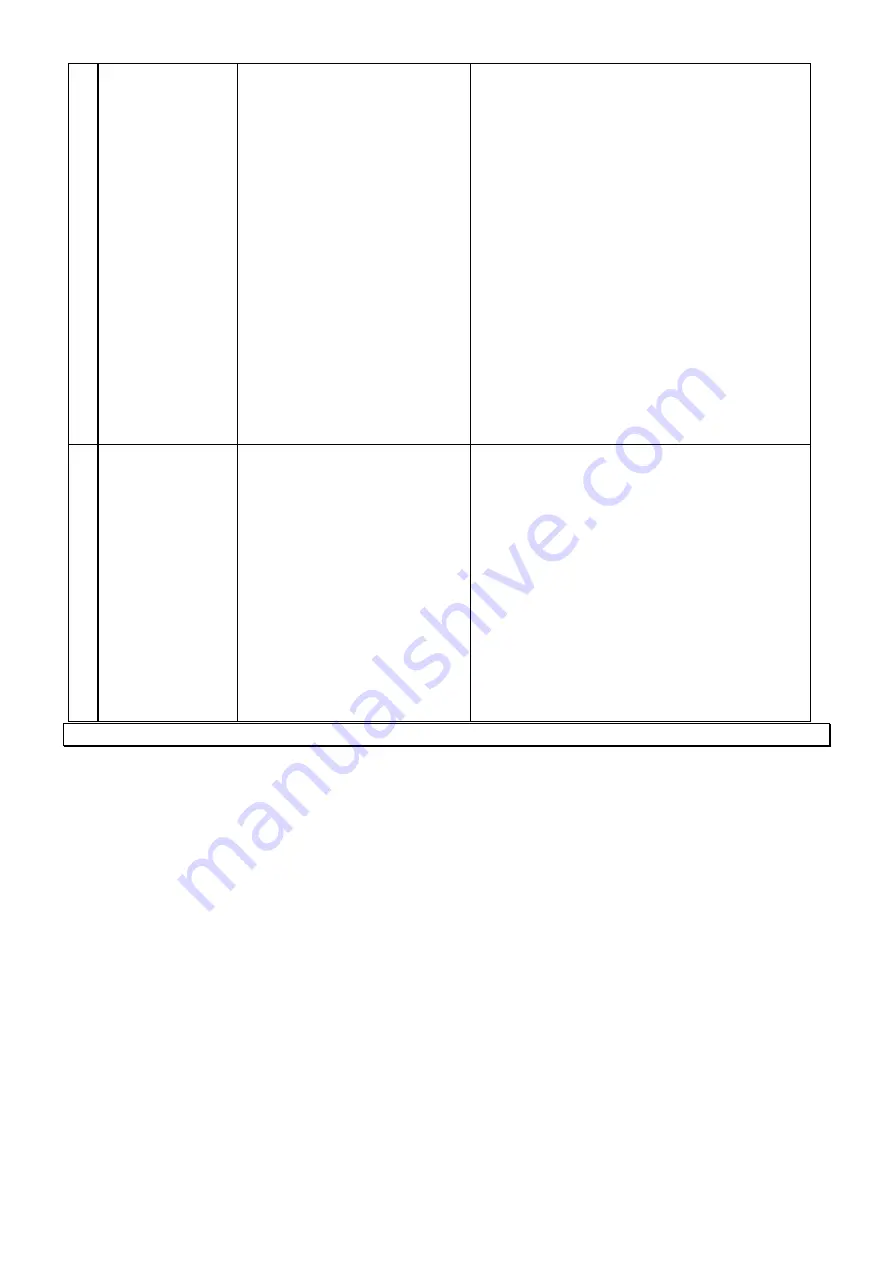
27-05-19 UNI-SAN Domestic Instructions Page 13
1
0.
Liquid leaks from
the unit.
-Loose pipework connection.
-Faulty float level switch gland.
-Mechanical seal fault (leakage
between motor and pump out of
2 small rectangular slots).
-Leakage from the seal gasket
between the pump and the tank.
-Leakage from between the
motor and pump.
-Tighten the pipework connections.
-Check and replace the gland if required.
-Check and replace if necessary.
-Check the condition of the seal. Replace if
necessary. If necessary, run a small bead of
neutral cure silicone sealant rated at 100
degrees Celsius on both sides of the seal.
-Check and tighten the 4 studs to the tank.
-Check there is adequate pressure on the seal.
Adjust with the 4 nuts above and 4 nuts below
the motor and pump assembly. Do NOT
overtighten.
-Check the condition of the o'ring. Make sure it is
not pinched. Replace if necessary.
-Check the pressure on the o'ring. Adjust the 4
nuts as per above. Do NOT overtighten.
1
1.
Waste water
builds up in the
shower tray.
-Air lock because connection is
made into the small raised tank
chamber under the cover.
-Power is off.
-Overload trip.
-Inflows exceeding pump
capacity.
-Blockage in the pipework.
-Pump malfunctioning.
-Overflow pipe (if applicable) is
blocked.
-Reconnect the pipe into the walls of the
collection tank at other end.
-Check power supply and fuse.
-Determine the cause and remove. Allow the
motor to cool down. It will automatically reset. If
unsure or if the motor trips again, call a service
agent.
-Check system against pump operating
parameters. Refer Section 5 (Building Design).
Temporarily turn off discharging appliance(s).
-Find and remove blockage.
-Refer above faults and rectify.
-Unblock the overflow pipe.
































